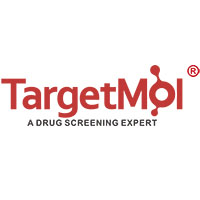| Name | Banoxantrone dihydrochloride |
| Description | Banoxantrone dihydrochloride (AQ4N dihydrochloride) is a novel hypoxic cytotoxin that selectively kills hypoxic cells through an iNOS-dependent mechanism. |
| In vitro | In hypoxic conditions, Banoxantrone dihydrochloride (AQ4N) undergoes reduction to form AQ4, a stable compound with high DNA affinity. AQ4 acts as a potent inhibitor of topoisomerase II, effectively damaging cells that enter the cell cycle following radiation exposure to the tumor's well-oxygenated regions. Specifically, Banoxantrone dihydrochloride demonstrates significantly higher cytotoxicity (more than 8-fold) in hypoxic environments compared to normoxic ones in 9L rat gliosarcoma and H460 human non-small-cell lung carcinoma cells, without similar effects across 11 other human cancer cell lines. Moreover, the relationship between DT-diaphorase protein levels and Banoxantrone chemosensitivity is weak across these cancer cell lines, and Banoxantrone's effectiveness does not diminish in the presence of DT-diaphorase inhibitors. Banoxantrone dihydrochloride is chemically characterized as a bis-N-oxide, which is sequentially reduced to the tertiary amine AQ4. AQ4 exhibits potent cytotoxicity against both aerobic and hypoxic cells by intercalating into DNA, forming a stable complex that inhibits topoisomerase II, leading to DNA damage and subsequent cell death, a mechanism not observed with AQ4N. |
| In vivo | Banoxantrone dihydrochloride(AQ4N) showed ≥ 8-fold higher cytotoxicity under hypoxia than normoxia in cultures of 9L rat gliosarcoma and H460 human non-small-cell lung carcinoma cells but not for 11 other human cancer cell lines. DT-diaphorase protein levels and Banoxantrone dihydrochloride(AQ4N) chemosensitivity were poorly correlated across the cancer cell line panel, and Banoxantrone dihydrochloride(AQ4N)chemosensitivity was not affected by DT-diaphorase inhibitors. Moreover, the activation of Banoxantrone dihydrochloride(AQ4N)cytotoxicity in vivo requires tumor hypoxia that is more extensive or prolonged than can readily be achieved by vasodilation or by antiangiogenic drug treatment[1][2]. |
| Storage | Powder: -20°C for 3 years | In solvent: -80°C for 1 year | Shipping with blue ice. |
| Solubility Information | DMSO : 10 mg/mL (19.33 mM), Sonication is recommended.
H2O : 10 mg/mL (19.33 mM), Sonication is recommended.
|
| Keywords | Banoxantrone | AQ4N |
| Inhibitors Related | Miconazole | Aminoguanidine hydrochloride | L-NAME hydrochloride | EIT hydrobromide | Dexamethasone acetate | S-Methylisothiourea sulfate | Cannabigerol | 1400W dihydrochloride | Flavone | Diallyl disulfide |
| Related Compound Libraries | Bioactive Compound Library | Drug Repurposing Compound Library | Bioactive Compounds Library Max |

 United States
United States



